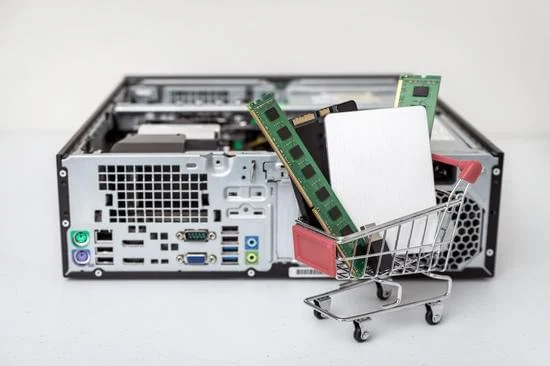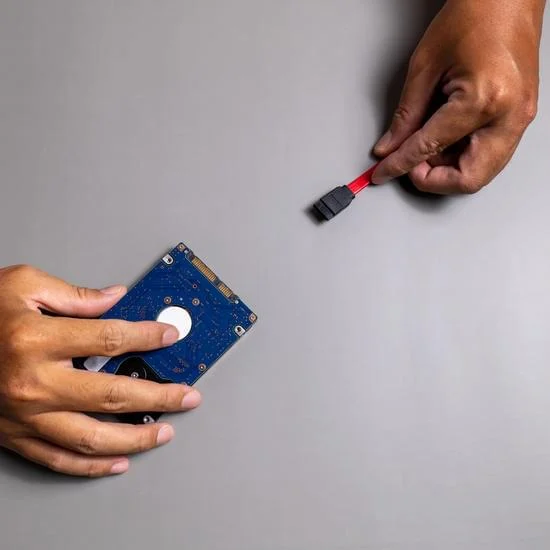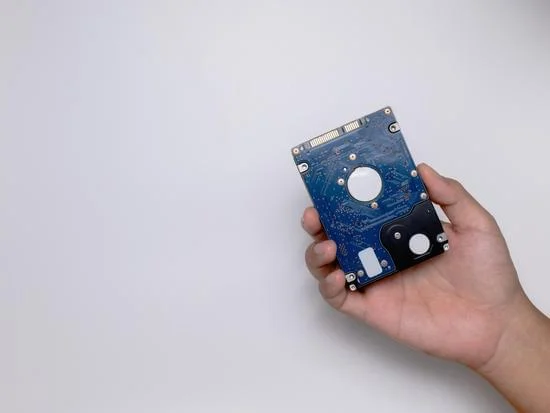Laptop SSD Upgrade
When you first buy a laptop, it’s typically fast and responsive. But over time, as you install more software, store more files, and use your laptop more extensively, its performance can start to lag. However, an easy and effective way to speed up your laptop is to replace its traditional HDD with an SSD.
Here, we’ll discuss the benefits of a laptop SSD upgrade, guide you on how to choose the right SSD, and explain the process of upgrading your laptop’s storage.
What Is an SSD, and Why Does It Matter for Your Laptop?
A solid-state drive (SSD) is a type of storage device that uses flash memory to store data. Unlike traditional hard drives (HDDs) that rely on spinning disks to read and write data, SSDs store data on microchips, which makes them faster, more reliable, and quieter.

How to Choose the Right SSD for Your Laptop
Now that we’ve established the benefits of a laptop SSD upgrade, let’s talk about how to choose the right SSD. There are several factors to consider when shopping for an SSD:
1. Storage Capacity
SSDs come in various sizes, typically ranging from 120 GB to 2 TB or more. When deciding on the capacity, consider how much storage space you need. A 250 GB or 500 GB SSD might be enough if you only store a few documents and applications. However, if you store large files like videos, photos, or games, you may opt for a larger SSD (1 TB or more).
2. Interface (SATA vs. NVMe)
There are two main types of SSD interfaces: SATA and NVMe.
- SATA SSD: SATA is an older interface and is commonly found in laptops. It’s cheaper but not as fast as NVMe.
- NVMe SSD: NVMe (Non-Volatile Memory Express) is a newer interface that offers significantly faster speeds than SATA. If your laptop supports NVMe, it’s a great choice for a high-speed upgrade, but it can be more expensive.
3. Read and Write Speeds
When comparing SSDs, look at their read and write speeds. Read speed refers to how quickly the SSD can access data, while write speed is how fast data can be saved to the drive. NVMe SSDs offer much higher speeds than SATA SSDs, making them a better choice for power users who need fast data transfer speeds.
4. Brand and Warranty
Stick to well-known brands when purchasing an SSD. Companies like Samsung, Crucial, Western Digital, and Kingston are popular and known for producing reliable, high-quality SSDs. Additionally, check for warranty information. Many SSDs come with a 3-5 year warranty, which gives you peace of mind in case of any issues.
How to Upgrade Your Laptop’s SSD: A Step-by-Step Guide
Here’s a simple, step-by-step guide to upgrading your laptop’s storage:
1. Backup Your Data
Before you start, it’s important to back up your files. You can use an external hard drive, cloud storage, or another backup method to make sure your data is safe. This will protect your files if anything goes wrong during the upgrade process.
2. Gather Your Tools
You’ll need a few basic tools for the job:
- A new SSD
- A screwdriver (typically a small Phillips head)
- A USB to SATA/SSD adapter or external enclosure (for cloning your old drive to the new SSD)

3. Clone Your Old Drive (Optional)
If you want to keep your operating system, programs, and files intact, you can clone your old HDD to the new SSD. This involves copying everything from your old drive to your new SSD, so you won’t have to reinstall everything.
There are many free or paid cloning software options available, such as Macrium Reflect, Clonezilla, or EaseUS Todo Backup. These programs make it easy to copy the contents of your old drive to the new SSD.
4. Replace the Old Drive
Once your new SSD is ready, it’s time to replace the old one:
- Turn off your laptop and disconnect it from any power sources.
- Open the back panel of your laptop using the screwdriver.
- Carefully remove the old hard drive by unscrewing it from its compartment and disconnecting it.
- Install the new SSD by securing it in place and reconnecting it.
5. Boot Up and Install the OS (if necessary)
If you cloned your old drive, you should be able to boot into your operating system without any issues. If not, you’ll need to reinstall your operating system (like Windows or macOS) on the new SSD. This can be done by booting from a USB drive with the installation files.
6. Enjoy Your Faster Laptop
Once everything is set up, you’ll be amazed at how much faster your laptop feels. From quicker boot times to faster file transfers, the laptop SSD upgrade will give your device a noticeable performance boost.
Get Professional Help with Your Laptop SSD Upgrade at Laptop World
A laptop SSD upgrade is a great way to boost its performance, but if you’re not comfortable doing it yourself, Laptop World is here to help. With over 20 years of experience in the retail industry, Laptop World offers expert services for all your laptop upgrade needs, including SSD installations.
Our team of skilled technicians performs the SSD upgrade with precision, which minimizes the potential for data loss or damage to your device. Whether you need help choosing the right SSD for your laptop or require assistance with cloning your data, we’ve got you covered.
For businesses, our corporate division, Nurture IT, provides comprehensive IT solutions tailored for startups, ensuring all your IT needs are met in one place. From laptops to networking, servers, Information Security, End User Protection – we have you covered.

FAQs
1. Can I replace 256GB SSD with 512GB SSD?
Yes, you can replace a 256GB SSD with a 512GB SSD as long as your laptop supports the larger capacity. Simply check your laptop’s specifications for compatibility before upgrading.
2. Is 256GB SSD enough for a laptop?
A 256GB SSD can be sufficient for most users, especially if you store fewer files and use cloud storage. However, if you work with large files or install many programs, you may need a larger drive.
3. Does SSD make a laptop faster?
Yes, an SSD can make your laptop faster. It speeds up boot times, program launches, and file transfers compared to traditional hard drives (HDDs), leading to improved overall system performance.
4. Can SSD be faster than RAM?
No, RAM is generally faster than an SSD because it temporarily stores data that the CPU can access instantly. However, an SSD is still much faster than a hard drive in terms of data access and retrieval.
5. What are the disadvantages of SSD?
The main disadvantages of SSDs include higher cost per gigabyte compared to HDDs, limited write cycles (though this is less of an issue with modern SSDs), and a potential decrease in performance over time with heavy use. However, these issues are typically minor for most users.
